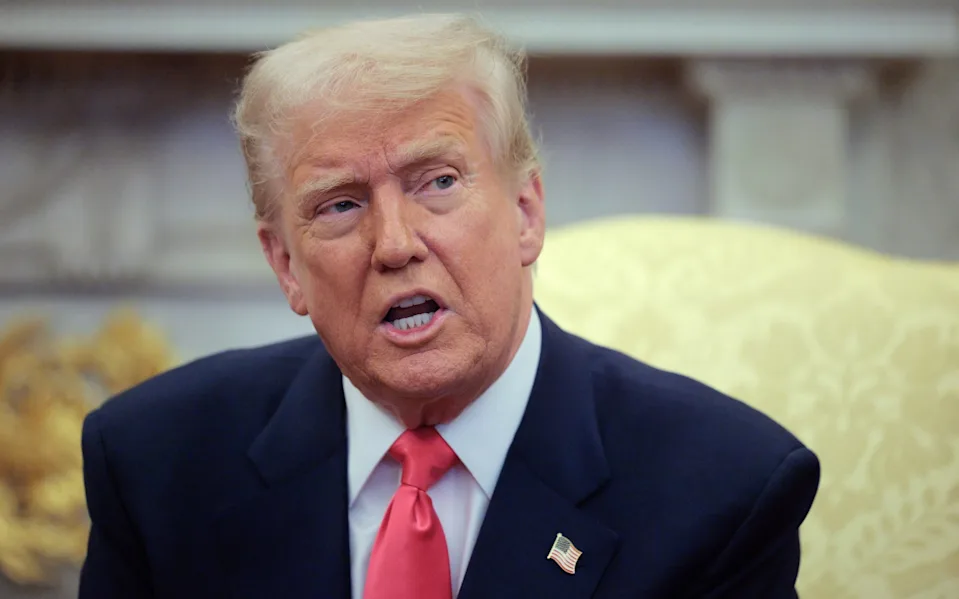In a move that sent shockwaves through the educational and political landscape, former U.S. President Donald Trump signed an executive order aimed at dismantling the U.S. Department of Education (DOE). The announcement, made at a signing ceremony at the White House, has sparked heated debate, as critics and supporters weigh the implications of this drastic restructuring of federal oversight in education. By directing then-Education Secretary Linda McMahon to take steps toward closing the department, Trump set a precedent with far-reaching consequences for students, educators, and the broader public.
The executive order tasks the Education Secretary with dismantling key functions of the Department of Education, which Trump argued had grown excessively bloated without delivering commensurate improvements in national test scores. Citing a budget that had doubled in size in recent years, Trump emphasized his goal of returning control of education to state and local governments. This aligns with his longstanding campaign promise to “send education back to the states,” reflecting conservative frustration over perceived federal overreach.
However, this move does not immediately eliminate federal education programs. The White House clarified that essential programs, including Title I (which allocates $18.4 billion to high-poverty K-12 schools) and the Individuals with Disabilities Education Act (IDEA), as well as the federal student loan program worth $1.6 trillion, would remain unaffected in the short term. Still, critics have raised concerns about the long-term ramifications of the executive order.
The DOE’s primary functions include distributing grants and overseeing education policies designed to ensure equitable access to quality education. While Trump assured the public that critical initiatives like special education and federal student loans would be preserved, there remains uncertainty over what spending cuts might be implemented. Already, the Trump administration had reduced the department’s workforce by nearly 50% and canceled numerous grants, moves perceived by some as an incremental dismantling of federal influence over education.
The DOE has long been a target for Republican criticism. Since the 1980s, conservative lawmakers have advocated for the department’s elimination, arguing that education should be under state jurisdiction rather than federal oversight. This view has gained traction in recent years among pro-Trump grassroots activists who oppose federal education standards and progressive policies.
The executive order drew swift condemnation from Democratic leaders on Capitol Hill. Hakeem Jeffries, U.S. House Minority Leader, warned that dismantling the DOE could devastate public schools, particularly those serving low-income families. He expressed concern that the absence of federal oversight would lead to overcrowded classrooms, reduced special education services, and fewer resources for students and teachers.
Progressive Democrats also criticized the order, describing it as a power grab designed to bypass Congress. They argued that Trump’s executive action undermined constitutional checks and balances by circumventing the legislative branch.
The idea of eliminating the Department of Education is not new. Conservative think tanks, including the Heritage Foundation, have long proposed scaling back the department’s role to that of a data-gathering and advisory agency. Trump’s actions echo the recommendations outlined in “Project 2025,” a policy manifesto aiming to reshape federal governance.
Notably, Congressman Thomas Massie, a Republican from Kentucky, introduced a separate bill in January proposing the complete termination of the DOE by the end of 2026. Similar proposals have failed in the past, but the executive order has revitalized the conversation about the federal role in education.
Trump’s executive order to dismantle the U.S. Department of Education represents a seismic shift in federal education policy, reflecting deep ideological divides over the role of government in public education. While supporters applaud the move as a step toward decentralization and state autonomy, critics warn of potentially devastating consequences for vulnerable students and public schools nationwide. As the debate continues, the future of federal education programs hangs in the balance, with millions of Americans awaiting clarity on how this policy shift will affect their lives and communities.


